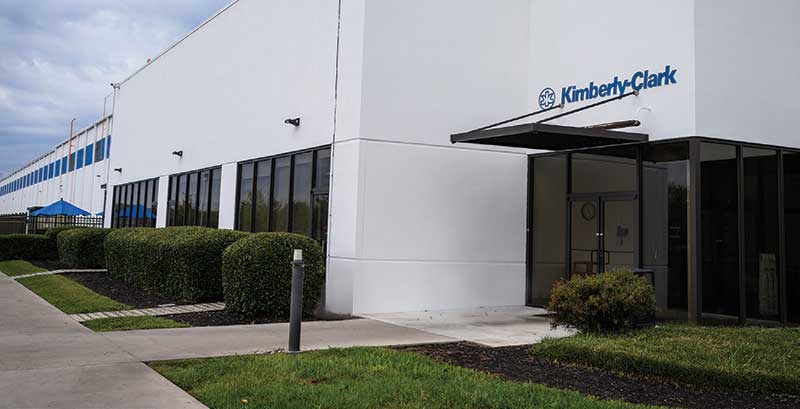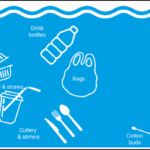Kimberly-Clark Corporation has recently announced that, Mike Hsu, Chairman and Chief Executive Officer, and members of his executive leadership team are unveiling the next phase of the company’s transformation, including a new operating model and key commercial initiatives designed to grow its brands and businesses at a faster pace than its categories.
“Over the past five years, our global team’s dedication and strong execution have positioned us to fully leverage the scale we’ve built and to catapult Kimberly-Clark into its next chapter of growth,” said Hsu. “We are building on the consumer centricity and commercial advantages we’ve established by moving to a more agile and focused operating structure that we are confident will help accelerate our proprietary pipeline of innovation in right-to-win spaces and improve our growth trajectory, profitability, and returns on investment. We have more than 150 years of history, transforming groundbreaking insights into innovative categories, with products that provide Better Care for a Better World. We are excited to build on the strength of that legacy as we drive for consistent, long-term value creation.”
Hsu added, “Science and innovation are competitive advantages at Kimberly-Clark, and together they fuel our ability to meet the needs of today’s consumers. Sustainability is a critical component of the Kimberly-Clark innovation strategy, and we are proud to announce our ambition to be 100% Natural Forest Free in all our products and to be more than mid-way to this goal by 2030.”
The Kimberly-Clark Operating Model
The company will focus on driving a step-change in performance by sharpening its strategic focus through a new operating model that leverages three synergistic forces:
- Accelerating Pioneering Innovation to capture significant growth available in its categories by investing in science and technology to satisfy unmet and evolving consumer needs. Kimberly-Clark will focus on growing 12 powerhouse brands that have #1 or strong #2 positions and drive more than 80% of the company’s net sales in five, global daily-need spaces with a total addressable market of approximately $240 billion: Baby & Child Care, Feminine Care, Adult Care, Family Care, and Professional.
- Optimizing its Margin Structure to deliver superior consumer propositions at every rung of the price-value ladder. The company will implement initiatives and deploy technology and data analytics designed to create a fast, adaptable, integrated supply chain with greater visibility that can deliver continuous improvement. The planned supply chain modernization is expected to generate more than $3 billion in gross productivity and $500 million in working capital savings that will be used to help fuel growth investments.
- Wiring its Organization for Growth to drive agility, speed, and focused execution that extends the company’s competitive advantages further into the future. In the coming months, the company plans to reorganize its operations into three business segments:
-
- North America: A business that currently generates approximately $11 billion in sales annually and a 23% operating profit margin that will leverage its significant scale to amplify value creation, drive an end-to-end cost transformation, and accelerate innovation into fast-moving consumer need spaces through 11 powerhouse brands across consumer and professional channels.
- International Personal Care (IPC): A segment with approximately $6 billion in sales annually and low-to-mid teens operating profit margins that is focused on three core categories ꟷ Baby & Child Care, Feminine Care and Adult Care. IPC is designed to drive strong growth and improved profitability by scaling a proven growth model, with focused investments in five Core Markets that make up approximately 60% of segment sales. In the 50 Enterprise Markets that make up the balance of the business, the company will seek to improve growth trajectories, profitability and returns on investment by optimizing routes-to-market while harmonizing and simplifying product portfolios.
- International Family Care and Professional (IFP): A business that currently generates approximately $3.5 billion in sales annually and approximately 10% operating margins. IFP will bring together the company’s international consumer tissue business with its international professional business to capture synergies and establish shared resources globally. The segment will focus on improving its business mix and profitability by growing six iconic brands in five large Family Care and five Professional markets while capturing significant margin potential by leveraging shared technology platforms, and efficiently deploying and scaling the best of its business.
These three new business segments will be supported by more efficient, world-class functions, including Research & Development, Marketing, Finance, Information Technology, and Human Resources. The company expects to complete its transition to the new organizational structure by the end of 2024. These actions are expected to generate approximately $200 million of selling, general and administrative savings in the next few years that will be available to invest back in the business.
100% Natural Forest-Free Ambition
Sustainability is a key pillar of Kimberly-Clark’s innovation pipeline, with the company focused on delivering products with enhanced consumer benefits while striving to use less material and increasing the use of more sustainable material. Over the past decade, the company has explored an extensive array of alternative fiber options, investing significantly in developing more sustainable products. Based on progress against existing goals, Kimberly-Clark is setting a new ambition to be 100% Natural Forest Free across its product portfolio. The company expects to be more than halfway to this goal by 2030.
Long-Term Growth and Return Algorithm
Kimberly-Clark has set long-term growth and return targets that include:
- Organic Net Sales growth ahead of market growth;
- Adjusted Operating Profit growth in the mid-to-high single digits on a constant currency basis;
- Adjusted EPS growth in mid-to-high single digits on a constant currency basis; and
- Annual Free Cash Flow generation of at least $2 billion.
“We see a clear path to consistent growth and strong margin expansion as we sharpen our focus on areas of competitive advantage and where we believe we have the right to win,” said Nelson Urdaneta, Chief Financial Officer. “Leveraging our strong innovation pipeline and go-to-market capabilities to drive growth, our new productivity programs to deliver efficiencies, and our capital priorities to support reinvestment and accelerate our strategic plan will support our ability to achieve our new long-term financial profile in the years ahead.”
The company’s capital priorities have not changed. These priorities include investing to accelerate organic growth with strong returns that will strengthen the company’s market positions; growing the dividend while maintaining the company’s single-A credit rating; evaluating strategic acquisitions that can deliver incremental growth and return opportunities; and allocating residual capital to share repurchases, to minimally offset dilution from equity incentive programs.
The company currently expects to incur approximately $1.5 billion in one-time restructuring and reorganization costs, split roughly into 50% in non-cash charges and 50% of cash expenses, over the next three years as it implements its plans.




